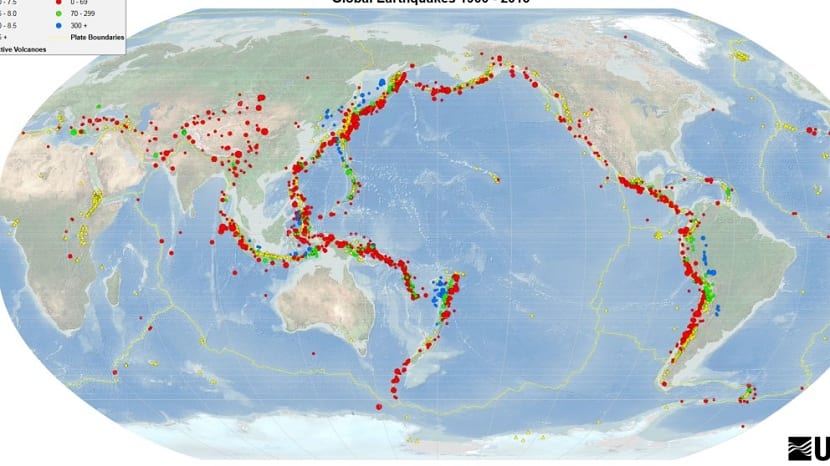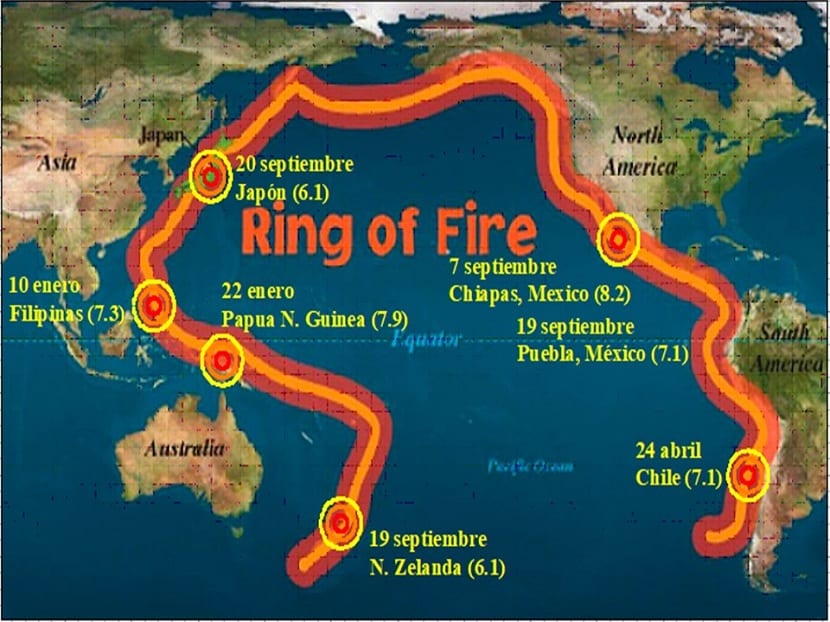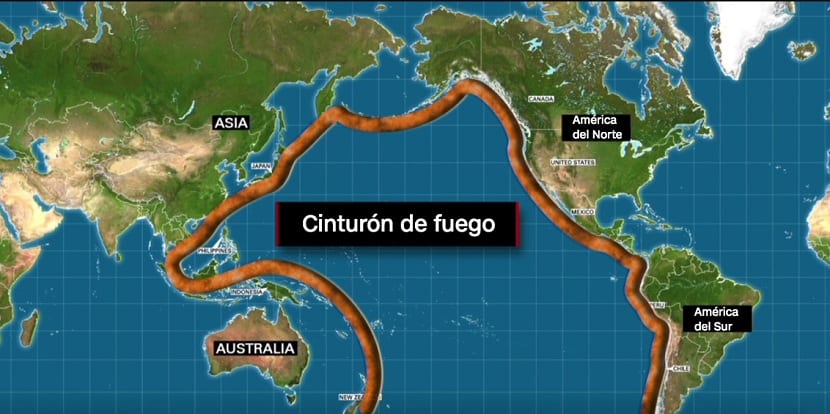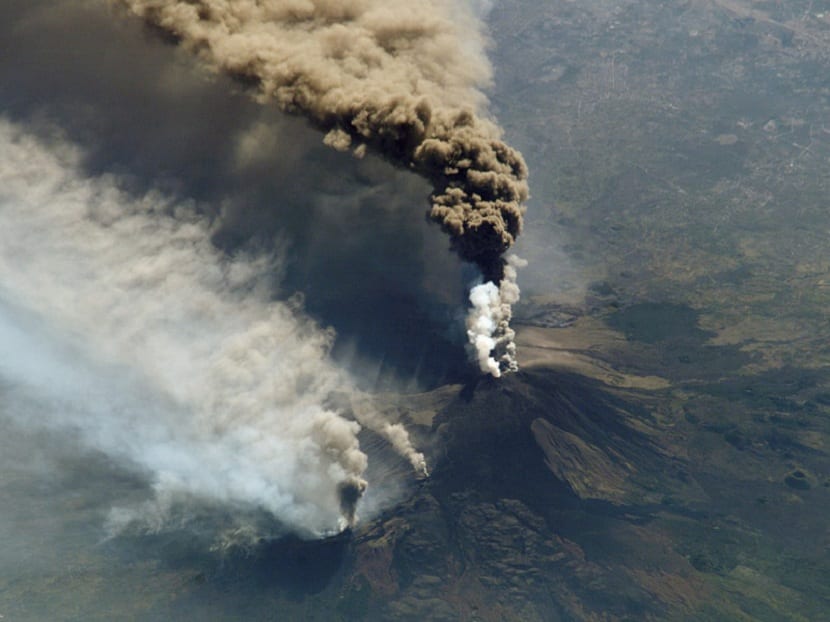
On this planet there are areas where danger abounds more than in others and, therefore, these areas receive more striking names that you may think that refers to something more dangerous. In this case we are going to talk about Pacific ring of fire. Some know it as the Pacific ring of fire and others as the circum-Pacific belt. These names all refer to an area that surrounds this ocean and where there is both a very high seismic and volcanic activity.
In this article we are going to tell you what the Pacific ring of fire is, what characteristics it has and its importance for studies and knowledge of the planet.
What is the Pacific Belt of Fire

In this area with the shape of a horseshoe and not a circle, large amounts of seismic and volcanic activity are recorded. This makes this area more dangerous due to the disasters that can be caused. This belt It stretches for more than 40.000 kilometers from New Zealand to the entire west coast of South America. It also crosses the entire area of the coasts of East Asia and Alaska and passes through the northeast of North America and Central America.
As mentioned in the Tectonic plates, this belt marks the edges that exist in the Pacific plate along with other smaller tectonic plates that form what is called the Earth crust. Being an area with very high seismic and volcanic activity, it is classified as dangerous.
How was it formed?

The Pacific ring of fire was formed by the movement of tectonic plates. The plates are not fixed, but are in continuous movement. This is due to the convection currents that exist in the Earth's mantle. The difference in the density of materials causes them to move and lead to a movement of the tectonic plates. Thus, a displacement of a few centimeters per year is achieved. We do not notice it on a human scale, but it does show if we evaluate the geological time.
Over the millions of years, the movement of these plates has triggered the formation of the Pacific ring of fire. The tectonic plates are not totally united to each other, but there is a gap between them. They are usually about 80 km thick and move through the aforementioned convection currents in the mantle.
As these plates move, they tend to both separate and collide with each other. Depending on the density of each of them, one can also sink over the other. For example, oceanic plates have a higher density than continental ones. Therefore, they are the ones that, when both plates collide, subduct in front of the other. This movement and collision of plates produces intense geological activity at the edges of the plates. For this reason, these areas are considered to be particularly active.
The plate boundaries we find:
- Convergent limits. In these limits are where the tectonic plates collide with each other. This can cause a heavier plate to collide with a lighter one. In this way, what is known as a subduction zone is created. One plate subducts over the other. In these areas where this occurs, there is a large volcanic quantity because this subduction causes the magma to rise through the crust. Obviously, this does not happen in a moment. It is a process that takes billions of years. This is how the volcanic arches have been formed.
- Divergent limits. They are those totally contrary to the convergent ones. In these the plates are in a state of separation. Each year they separate a little more, creating a new ocean surface.
- Transformation limits. In these limits the plates neither separate nor join, they only slide in a parallel or horizontal way.
- Hot spots. They are the regions where the terrestrial mantle that is located just below the plate has more temperature than other areas. In these cases, the hot magma is able to rise to the surface and produce more active volcanoes.
The limits of the plates are considered those areas where both geological and volcanic activity are concentrated. For this reason, it is normal that so many volcanoes and earthquakes are concentrated in the Pacific ring of fire. The problem is when an earthquake occurs in the sea and results in a tsunami with a corresponding tsunami. In these cases, the danger increases to the point that it can cause disasters like the one in Fukushima in 2011.
Pacific Belt of Fire Activity

As you may have noticed, volcanoes are not evenly distributed throughout the planet. Quite the opposite. They are part of an area where geological activity is greater. If this activity did not exist, volcanoes would not exist. Earthquakes are caused by the accumulation and release of energy between plates. These earthquakes are more common in countries where we have located along the Pacific Ring of Fire area.
And is that this ring of fire concentrates 75% of all active volcanoes on the entire planet. 90% of earthquakes also occur. There are numerous islands and archipelagos together and different volcanoes that have violent and explosive eruptions. Volcanic arches are also common. They are chains of volcanoes that lie on top of the subduction plates.
This fact makes many people around the world have both fascination and fear for this belt of fire. This is due to the force with which they act is tremendous and can unleash real natural disasters.
As you can see, nature is something that never ceases to amaze us and there are many volcanic and geological events in the Pacific ring of fire.